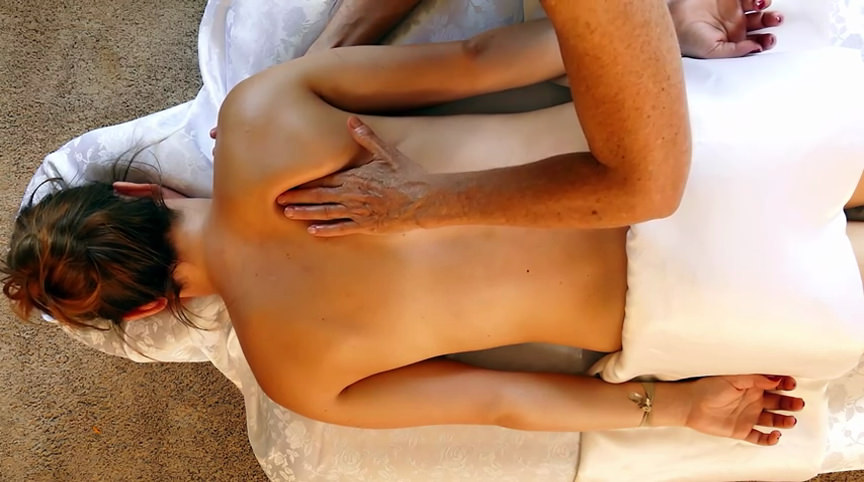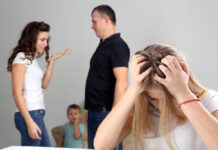In a study published in the Journal of Clinical Psychiatry Mark Hyman Rapaport and his colleagues report the results of a randomized clinical trial using Swedish massage therapy as an intervention for Generalized Anxiety Disorder (GAD). The study conducted at the Mood and Anxiety Disorders Program of Emory University in Atlanta, Georgia, found that twice-weekly massage therapy may be a useful alternative treatment for anxiety in terms of reducing both, psychological and somatic symptoms. They believe that further research to corroborate their findings is warranted.

The researchers thought this study would be useful because, “a decrease in symptoms of anxiety has been reported as a secondary outcome in a wide array of studies investigating the efficacy of massage for medical disorders, but the published literature on the use of massage as a primary treatment for GAD is limited to 1 case series and a single clinical trial in which massage was combined with conventional therapies. Massage has been demonstrated to modulate peripheral stress hormones and immune parameters both of which are reported to be abnormal in patients with GAD.”
Also, they report, massage is a complementary and alternative treatment that is often sought out for symptoms of anxiety.
GAD has a lifetime prevalence of 5.7% in the United States, and as the researchers point out, is often comorbid with other disorders like depression and physical illness. They also note that despite there being both psychotherapies and pharmacotherapies to treat GAD, many persons seek alternative treatments because of reasons like stigma, ambivalence toward using medication or the side effects of medication.
In this study, the researchers recruited 47 people with GAD from the local community. Participants were included if they met criteria for GAD as determined by the Structured Clinical Interview for DSM-IV (SCID) and have a Hamilton Anxiety Rating Scale (HARS) total score >14. As the researchers were investigating massage as a monotherapy, they excluded participants who were being treated for anxiety with medication or psychotherapy. They were randomly assigned to one of two groups – 23 were assigned to receive Swedish massage therapy (experimental group) and 24 received light touch therapy (control group). Both groups received treatment bi-weekly for 6 weeks.
“Swedish massage techniques included effleurage (slow, rhythmic, continuous stroking), petrissage (slow, rhythmic kneading of underlying muscles), and tapotement (various forms of percussive touching/ tapping). The same therapists performed the control light touch treatment, which consisted of the light laying on of hands, in the same sequence and for the same amount of time.”
Prior to starting the interventions (baseline assessment) and after the 12th and last session, psychiatrists measured the participants’ level of anxiety and depression and the participants completed self-report measures of anxiety, depression, mood and quality of life. After each session (2 through 12) the participant completed the quality of life measure and the psychiatrist assessed for the level of anxiety.
In comparison with the control group (light touch), the participants who received the experimental (Swedish massage) treatment showed statistical and clinically significant improvements in both the primary or main outcome of anxiety scores as well as the secondary outcome of depression scores. These improvements were seen as early as week 3. However, there were no significant changes for participants in their experienced quality of life.
Some of the limitations of the study include the inability to conceal from participants whether they were in the experimental or control group and the relatively small sample size. They conclude, “. . . a time-limited course of massage may be a reasonable treatment alternative for people with GAD. Further study to replicate and extend our findings by comparing Swedish massage therapy to accepted treatments for GAD is warranted”
The researchers conclude, “. . . a time-limited course of massage may be a reasonable treatment alternative for people with GAD. Further study to replicate and extend our findings by comparing Swedish massage therapy to accepted treatments for GAD is warranted”
****
Rapaport, M. H., Schettler, P., Larson, E. R., Edwards, S. A., Dunlop, B. W., Rakofsky, J. J., & Kinkead, B. (2016). Acute Swedish Massage Monotherapy Successfully Remediates Symptoms of Generalized Anxiety Disorder: A Proof-of-Concept, Randomized Controlled Study. The Journal Of Clinical Psychiatry, 77(7), e883-e891. doi:10.4088/JCP.15m10151 (Abstract)















I have been getting weekly massages for the past year, and personally think regular massages improve one’s quality of life. But I’ve been getting them due to a problematic sciatic nerve, not due to anxiety or depression, so the massages are actually reducing muscle tightness resulting from the sciatic nerve issue. But I find it almost impossible to believe that regular massages would not improve anyone’s quality of life, they’re such a treat.
Report comment
But what might be more effective is rather than treating anxiety as some sort of an illness, to simply try and correct the problems which are making someone anxious.
If someone is anxious, it is almost always for good reason.
There may be things which make a person’s life particularly fragile, so they feel anxiety over things others would dismiss.
Political organizing and political and legal action can strengthen the standing of those on the margins. And those of us Survivors of the Middle-Class Family are always on the margins because we have yet organize and do anything.
Nomadic
Report comment
I recommend cuddling with your dog as highly therapeutic. Well it works for me. Side effects include a very spoiled dog. Well that’s probably all for the good.
Report comment